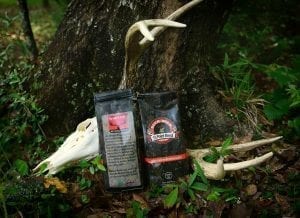Listen to the podcast here:
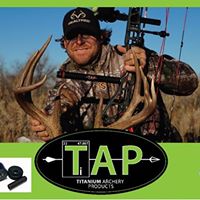
welcome to another episode of Whitetail Rendezvous. I’m with Sam Shaffer. Now Sam is the CEO of Titanium Archery Products https://titaniumarcheryproducts.com/and he hails from Pennsylvania.
Sam Shaffer, the founder and owner of Titanium Archery Products will discuss advancements in Bowhunting, Archery Accessories, Outdoor Adventures and the occasional off-road journey into random subject matter. With Sam’s creative mind always churning out innovative ideas and opinions on topics ranging from Whitetail Deer, to Kinetic Energy to Pop Culture you’re sure to be ENTERTAINED and INFORMED.
Sam, welcome to the show.
Hey, Bruce. Thanks for having me on.
Hey, it’s exciting, and I’m really interested in finding out about your products and what makes them so successful in the field. You know, there are so many stabilizers, let’s just start with the stabilizer that you have. And there are so many products out there competing, so what’s so special about your product?
TAP – Deer Hunting Titanium Archery Products – Sam Shaffer
Well, you know, to us and to our customers there are several factors I would say that make them see and us feel that we have something special. And that’s superior materials that we put into these products and the way these materials react to the bow shot. You know, so if you’re talking about being more successful in the field, any additional or little edge you can get is something that as a bow hunter myself I want. And that’s what we deliver to people.
So you have a product that at its core gives you better materials and better performance, you should be able to take that into the field with you with confidence and actually apply it with more accuracy and better suppression of noise, better suppression of vibration. We make a string stop, for example. It makes the bow quieter, less jump…you know, less reaction from game. You know, those are the kinds of things that I focus on because that’s what I am, I’m a bow hunter. I started this because I’ve been bow hunting for 26 years now, and that’s what I love.
You know, you talk about being a bow hunter, so is this you started the company more out of necessity or need or just ideas? Or, you know, tell me about that.
I looked at products that are out there and, as you mentioned, there’s a lot of competition when it comes to stabilizers, when it comes to sights, rests, any product you can name there’s a lot of competitors. But I looked at what was out there and I have a history in working with titanium alloy, going back to about 15 years ago. I did work for a number of years on softball bats developing modifications to create high-performance bats using titanium. And understanding the benefits that were available there made me realize in time that this could be applied to archery in some really significant ways. And archery is my real passion. I mean I played softball for years, but that…archery is what I’m really into.
And archery is my real passion
So in 2016 is when I really started to play around with the idea of a prototype stabilizer. Because I looked at what stabilizers were out there and I thought, you know, the majority of bow hunters are not putting any thought, for the most part, into their stabilizer. They take whatever their buddy uses or whatever the shop owner recommends or whatever they see some big name guy using and they just throw that on there, but they’re not really thinking much about what it does, “Is it giving me much of any benefit?” And I realized I could make a better stabilizer, a lot better stabilizer. So that’s what…that’s where it all began.
So when you’re up in your tree stand, how important is the stabilizer in a 20, 30-yard shot? We’re not talking out west shooting antelope at 100 yards with a compound, we’re talking, you know, 20, 30 yards.
No, we’re not. And, you know, the majority of people are not talking about that scenario. 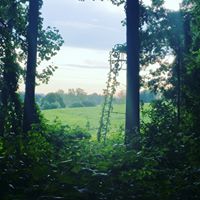 That’s far and away, that is the minority. Here in PA the average shot is 20 yards or under. I just shot a really nice buck last week and that was a 17-yard shot. You know, so you’re right. And then in a tree stand situation I don’t know that we’re going to be able to tell you definitively that our stabilizer will give you a superior result compared to, say, a Bee Stinger or some other stabilizer. Because you’re taking such short shots. But what I have seen the benefits of with our products is that people are so enamored with what they are seeing in their target practice.
That’s far and away, that is the minority. Here in PA the average shot is 20 yards or under. I just shot a really nice buck last week and that was a 17-yard shot. You know, so you’re right. And then in a tree stand situation I don’t know that we’re going to be able to tell you definitively that our stabilizer will give you a superior result compared to, say, a Bee Stinger or some other stabilizer. Because you’re taking such short shots. But what I have seen the benefits of with our products is that people are so enamored with what they are seeing in their target practice.
So that’s where we tell people if you really want to see the benefits of a good stabilizer, you need to be shooting 40 yards and beyond. That’s where they’ll start to see shrinking group sizes. Well, if you’re able to do that consistently on the target range and you’ve developed a confidence level that is increasing, I don’t see how that could not benefit you in the tree stand even on those short shots. Because having that level of confidence in your equipment and how it will perform and just having the feel of deadened and a quieted bow gives you a high degree of confidence.
if you really want to see the benefits of a good stabilizer, you need to be shooting 40 yards and beyond.
So to me that’s where it comes into play. Now I use a side stabilizer even in tree stand situations, ground blind situations. I think that’s a big part, too. And we can get into that in time, if you’d like. But that’s where I see it applying to your average everyday guy that take shorter shots.
What I hear you saying, you know, you go out to the range and shoot 50, 60… Guys shoot 70, 80 yards. I know some guys shoot 100 yards, you know, at a range. Even though they’ll never shoot any greater than probably 30 yards.
Most won’t.
“How did you do that?” Because I wouldn’t keep my stuff together, I’d lose it.
They never will at a target, or short. I know I’ve got a good friend, Loren Hamilton, in Wisconsin, he just shot a doe the other night and it was seven feet from his feet.
Sam: Yeah.
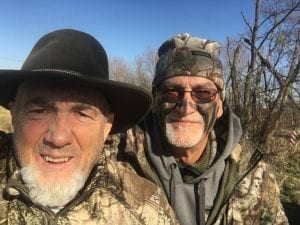
He was a dead tree. He just, you know, snuck up on a dead tree, you know, not even, you know, five feet off the ground and a doe walked right by him. And so he has a recurve, I mean just drilled the sucker.
Think about that, you can count the eyelashes.
Yeah. Yeah, that’s a situation where, I mean, that’s going to get your heart pumping whether that’s a doe or that’s a 12-point. I mean that’s an exciting situation to be in.
Bruce: Well, to be… And he’s a good hunter. And, you know, he loves to shoot traditional archery. You know, and it’s just like, you know, I said, “How did you do that?” Because I wouldn’t keep my stuff together, I’d lose it.
It’s tough.
I’m just being honest, I’d just be going, “Oh my goodness, oh my goodness, oh my goodness.”
Yeah, no, I… I’ll tell you when I started bow hunting and now that I’ve been doing it for so long, you do start to get control over some of those things to some degree. But there’s still not a deer that I shoot that I’m not really wound up about, how close I am. And, you know, that’s something I wanted to talk about later if we get a chance, is what I love about this, what my passion is, and then not wanting to lose that. And I’m seeing people losing that, and that’s something I wanted to…
Well, let’s talk about it right now. Let’s talk about that passion. You know, because it isn’t about grips and grins. To me hunting, and I’ve been at it for a long time, it’s about the journey, it’s meeting people and going to places that I never would book a trip to unless I was hunting.
Right.
Or getting into situations that I didn’t belong in.
Right.
You know, except I was hunting, so you’re all in, so you got to get out. That’s basically it. You know, so talk about your passion for hunting.
so talk about your passion for hunting.
Well, yeah, and that’s what drives me. And that’s why I started the company, because I wanted to make equipment available to people that gave them a better opportunity to be more ethical with their shots, to think more about becoming better as a hunter and an archer. And I see a lot of examples. I know you mentioned social media, and, you know, we’re on there. And I see so much of a flood of pictures coming out all the time now. And I see questionable shots, shot placement not that great. I see…I’m not sure how they take down some of these animals with where the shot, you know, impacted. And it makes me think about, you know, what it is that drives me. And I care so deeply about doing things correctly if at all possible. You know, I want that deer… I mostly hunt whitetail. I want that deer to go down as fast as possible, I want to make as humane of a kill as possible.
So I’m really passionate about showing the animals the respect that I think they deserve. 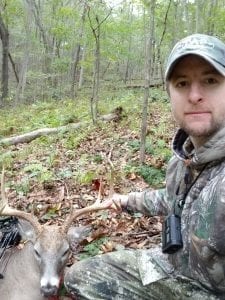 And I don’t know that that’s the case with everybody out there at this point and I feel like there’s…we’re losing some of that. I do feel like at times people are not giving the time to practice as fully as they should and put a lot of time in. Not just pick your bow up in August, pick your bow up in April, March, shoot all year like I do. I mean I just think at times, you know, that’s where, you know, people are losing focus. And there’s a lot of hype, hoopla, whatever you want to call it, over how big of a buck you shot and how many inches it was. You know, and that’s not what drives me as a hunter, it’s about the experience, it’s about being in the outdoors, it’s about… I believe that this is creation that we have access to we should appreciate. And, you know, that’s…I’m not sure that’s shared by everybody.
And I don’t know that that’s the case with everybody out there at this point and I feel like there’s…we’re losing some of that. I do feel like at times people are not giving the time to practice as fully as they should and put a lot of time in. Not just pick your bow up in August, pick your bow up in April, March, shoot all year like I do. I mean I just think at times, you know, that’s where, you know, people are losing focus. And there’s a lot of hype, hoopla, whatever you want to call it, over how big of a buck you shot and how many inches it was. You know, and that’s not what drives me as a hunter, it’s about the experience, it’s about being in the outdoors, it’s about… I believe that this is creation that we have access to we should appreciate. And, you know, that’s…I’m not sure that’s shared by everybody.
Yeah, well said. And I think, you know, this year I’ve seen a lot more of doe pictures. I’ve seen a lot of youth hunters, first year, and buck or doe, it doesn’t really matter.
No.
And the other thing, I had Kip Adams of QDMA https://www.qdma.com/ on earlier this morning and, you know, a lot of mature deer are showing up on, you know, social media. And it’s early in the season. And so let’s talk about, you know, early season bucks. You said you just shot a nice buck a week or so ago. You know, that’s not during the rut.
No. Well, he was showing some rut-like behavior though, actually, it was odd.
What was he doing?
I have the rack sitting right here, here he is. But, yeah, he was coming in on a mission. I mean it’s a public land deer. So just to kind of set the scenario up for you, it was in Maryland, public land, and it’s a heavily pressured area. These deer down there are very in tune with people’s patterns. So typically, if you can, you want to hunt during the week, don’t hunt weekends. They are trained for the most part to look up, they look up all the time, these deer constantly look up into tree stands. If you move wrong, if you’re silhouetted too much, they’ll pick you out.
And, but he came in on a beeline, head to the ground for the most part. And he stopped quick about 17 yards out and did look up at me and had me…I thought he had me pegged. I stood stock-still, and then he put his head down and put his nose back to the ground and started going broadside in front of me. I didn’t have a call or any kind of way to stop him and I had to make a split-second decision. I was at full draw and tracking him with a pin and found the spot, let it rip, and nailed him, double-lunged him, and he only went about 35 yards. But that was a thrilling experience on a really challenging deer, on a really challenging animal. That to me means everything. I don’t care what this deer scores, that’s irrelevant. It matters that I got a nice…to me, a nice buck out of a really tough situation.
So how did you do that? Okay, Maryland, public land, DIY, and, you know, they’re educated suburban deer. You know, because to me, you know, Maryland is the suburbs of, you know, Philadelphia, you know, and D.C.
You would think. In this particular area I was in this is pretty remote, actually. It’s back by…it’s near a lake. And I was in a good half-mile or more. Actually, I had to have some help to get him out, he weighed about 240 live. So he was a pretty good size. But how I got him is, you know, this is something I think people need to remember, is that, you know, if you keep in mind that deer are creatures of habit and that, you know, your past experiences with them should, to some degree, indicate what you’re going to see in the future.
So last year I had a really nice buck very similar to this one in almost the same area come in. This was actually in full rut, so this was in, like, early November. And he came in, I was in a climber, and this deer pegged me in a tree. I think I was silhouetted pretty good at that point though. I was at full draw on him though. I was at full draw, he was behind some brush, and I was thinking, “Just two more steps, man. You’re at like 22 yards, you’re dead.” And for some reason, I don’t know what happened, but he just looked up at me and he didn’t step out, he never stepped out. But that was one of those situations where I said, “Okay, I know this is an area that’s somewhat of a runway, it’s kind of a funnel where deer are definitely moving in rut. This is not an area you can go into in September and expect to see that buck, but they are using this area during that period of the year.”
But that’s what I think matters, is putting the time in, studying what they’re doing, using your past experiences, and just…and not giving up on a spot
So I went back in July this year and set up a really great spot, I had an ideal situation and it paid off. But that’s what I think matters, is putting the time in, studying what they’re doing, using your past experiences, and just…and not giving up on a spot, too. People give up on spots sometimes way too easy. And it’s like, “No, we know that there are quality deer here and you will get your opportunity at some point. You may not see deer for three or four days in a row, but these deer will come back through here.”
Yeah. And so many people… I like how you said don’t give up, because so many people it’s like, “Oh, where’s the deer, where’s the deer?” They’re there because you can see the sign, you can see old licking branches, you can see old scrapes, you can see old rubs. You know, not this year. I was just in Central Nebraska and I thought I was going to see some fresh rubs and fresh scrapes and everything, and they just hadn’t been opened up yet. But I saw licking branches, I saw everything I was looking for from past years, so I said, “Yeah, it’s just a matter of time.” And I’ll be going back there. You know, and I know right where I’m setting up and how I’m going to set up and how I’m going to hunt it. And, you know, you have to put in your time.
The only thing there, I don’t know how much pressure. I found one trail camera on the ground that I’m hunting, so I’m going, “Okay, there’s at least one other guy hunting in here.” I didn’t find any tree stands.
Yeah, yeah. That’s the other thing, you know, you got a lot of guys that are scoping areas out. And in this area I was in, I mean, there are guys that would have possibly passed this deer up. But if you would pass a deer like this up, you would not understand the value of getting a deer like this on public land in this area.
Well, anywhere, I mean anywhere. That’s a great deer. You know, that’s a great deer anywhere.
I feel like it is. But I see, again, you know, I refer back to social media, I see so many people talking about, you know, “That’s not my target buck,” or, “That’s not my hit list buck,” or, you know, “I’m passing this one up, I’m passing that one up.” And kind of I marvel at it and I get a little frustrated with that. Because, you know, I think that’s just not the experience for a lot of people out there. You know, they’re not in a situation where they have the time or the opportunities to pass up a really nice…a decent deer. You know, and that’s me, I’m running a company, I’m going to take an opportunity if I have it.
I’m going to take an opportunity if I have it.
And, you know, as far as trail cams and all those things go, I didn’t have one picture of this deer, and I’m glad I didn’t. And I didn’t have multiple cameras out down there, I’m glad I didn’t. It made it more special. I don’t have to see every deer in an area. I just need to see sign, I need to know that it’s got potential, and I’ll hunt it. And I’m almost shying away from cameras in the future, I think. I just…I’m not sure that I like the direction people are taking that.
Yeah, that’s…you know, we could talk about that for really a long time, and in the essence of getting, you know, to the other areas in the show.
Yeah.
But that’s a personal decision about how you want to frame your hunt and how you want to hunt. And, see, the nice thing is it doesn’t matter. Some may say, “You got to use trail cameras.” Yeah, you do, but then you don’t.
I use them sometimes.
Yeah. And it’s just like, you know, I think back to Native Americans. And I don’t know what tribes were in Pennsylvania, my American heritage.
Susquehannock.
Susquehannock? So they didn’t have anything, they had a stick and a string.
Yeah.
And, you know, they knapped their broadheads and they knew how to hunt.
Right. And that’s the thing, you know, is what are your skill…what’s your skill set and how are you applying it. And, you know, that makes me question at times, the kind of products that we do, how far is too far. You know, I’m taking it to a pretty advanced level with titanium. It’s giving you a little bit of an edge there over other products. Is that too far? I mean I’m always questioning that myself. You know, I don’t know. But I like what we do and I like the fact that I feel like we can make better shots because of these products, but that’s a great point you make. And, you know, a stick and a string will kill deer, but we like to take it further than that if we can.
You know, so it’s tough, I just…I see a lot of that stuff out there and I wonder if priorities are not off. And I wonder at times if even with kids… Like I have kids send me… And I get pictures sent from all over the country with this now. We’re running a contest at the moment where any big game harvest with a vertical bow, no crossbows, but we’re going to give away equipment. And it doesn’t matter if it’s a doe or it’s a turkey you kill, I don’t care what it is, it’s a random drawing.
“You’re how old and you have a hit list?
But I get pictures sent in and a kid sent me one… I say he’s a kid, he’s probably 13, 14, I don’t know how old. But he sent me a nice…a respectable buck, a picture of a nice buck. And then he sent me another one and he said, “Well, I got an even bigger one on my hit list.” And I’m thinking, “You’re how old and you have a hit list? And I don’t think you fully grasp the significance of the deer you already shot.” You know, a lot of guys I know would be thrilled, that might be a lifetime deer for them. You know, he’s probably in Illinois or some state where, you know, there’s a lot of opportunity. But that’s where I see people having maybe misplaced priorities and not understanding the significance of a clean harvest, no matter what it is.
Yeah, I think of my friend that I started hunting out west with a long time ago. And I talk to him every time I have a birthday, at least once a year. And we talked about, just a little about, hunting and memories and all that. And he said, you know, it was so much fun just to jump in the truck, a couple hundred bucks in your pocket, and you go out and you’d shoot an antelope and you’d shoot a mule deer.
Yes.
And completely no expectation, absolutely none if you were going to go out there. And, yeah, I like Coors Beer and, yeah, I like sitting by a…you know, a cottonwood fire and we tended. You know, and then we had a trailer. But, anyway, we just went out there, the whole experience. Shoot coyotes, shoot prairie dog, and it was the whole thing. Meet some people, meet some ranchers. And just, you know, he said, you know, we’ve made it too complex now, hunting is way too complex.
Yeah. It is. Think about all the gear people take with them now, I mean so many items.
You should see my truck. I’m leaving for a month though. It’s insane.
And I’m not bashing on people because I have plenty of gear, too. I got my range finder, I got my, I got all these items in my pocket. And I’m starting to think, you know, “Hey, this backpack is getting pretty heavy. Like shouldn’t I be maybe taking some items out of here?” You know, that’s a great…that’s what I want to be able to hold onto and I want…you know, and in the future with…as the company grows, I want to have opportunities like you’re talking about, to have memories built on a really good experience. Not just…you know, not defined by the kill, necessarily, but defined by what you do with other people while you’re out there.
I can’t have every pattern, there’s no way we can do that.
Yeah. And less is really more. And as you age, that really becomes important. But I just think about back when I started hunting it was really simple, it was a hoodie and some jeans and some rubber…some sort of rubber boots. And then if it was cold, we put on another coat and some mittens and a cap.
Guys today would laugh you out of the building and be like, “What’s wrong with you? You’re not wearing all your…you know, the camo”… Every item has to be camo, too. Everything has to be camo. You know, I deal with that all the time with our products. People will say, “Well, do you have, you know, XYZ brand in this pattern to match my bow?” And I said, you know, “I can’t have every item…I can’t have every pattern, there’s no way we can do that.” “Well, I don’t really want it then.” And it just baffles me, it’s like, “You’re choosing look over performance?” But that’s what matters to a lot of people.
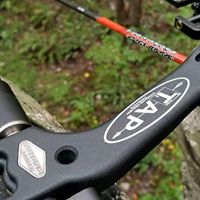 Yes, they are.
Yes, they are.
Yeah. Every day.
Yeah, I’ll flat out tell you.
Yeah.
You know, and sometimes marketing does a good job. What gal is wearing it or what guy is wearing it depends if they’ll buy it or not.
Oh yeah. Oh yeah. It’s huge.
Whether it works or not has no entity.
Got no bearing, no bearing on it at all.
And it’s crazy. And that’s business. And, folks, I get it. I’m not…
Oh yeah. I do, too. I mean, hey, you need to make your business go. I mean you have to use the effective strategies that get people buying your product. But when it comes to stuff like camo, yeah, I’m in that boat where, look, pick any respectable pattern, breaking your outline up is the key, not moving too much is the key. But what particular pattern you choose, oh come on, that’s personal preference, that just comes down to that.
You know, I think of the Benoit brothers and, you know, I read all their stuff on anything. You know, red plaid. That’s all they had, red wool plaid.
Oh yeah.
That was it. That was it.
I know. When I started hunting here in PA I had hand-me-downs, red plaid wool pants, red coat. I mean back in the day before they required blaze orange that’s what guys here wore, they wore those red plaids.
Yeah, and I had a wool red plaid jacket I wore for years.
Yeah. Yeah. A well-made product, a very well-made product though, and very warm.
Oh yeah, it lasted for years. You know, and I could wear that in the snow and, you know, whatever.
Oh yeah.
it’s the whole experience
But, folks, you know, I guess what we’re…Sam and I are saying, think about why you’re hunting. And I had a group discussion on that, why we hunt. And to a man and to a woman, you know, yes, the kill, the harvest is all important because the food is great, venison is organic. But it’s the places that it takes you and the conversations you have with people when you’re traveling and, you know, it’s the whole experience. Because it takes nanoseconds to pull the trigger.
I know, and that’s just the culmination of the hunt. You know, that’s just the final portion of the entire journey. You know, and it should not be the way you define whether it was a successful hunt. Last year I mentioned that buck, I didn’t get a shot at it. I considered that a very successful hunt. It was a little heartbreaking that I didn’t get a shot at a phenomenal buck, but the fact that I planned it out well enough to get an opportunity to even get to full draw meant a lot to me on it. You know, so that’s what I want to see more of, that we focus on that and focus less on, you know, this trophy, that trophy, and just how many inches it was, “Is it a booner? Is it a Pope & Young?,” and, you know, all those things. If you’re able to do that, congratulations, my hat is off to you, that’s awesome. But it should not be how you view success, in my mind.
You know, you’ve been handling your stabilizer there, so let’s talk. You know, what does a stabilizer really do for a bow? No matter whose brand it is or what it’s made of, what’s the purpose of a stabilizer?
Well, to put it into scientific terms, you’re increasing the moment of inertia on your bow. So essentially what that is is it makes the bow more resistant to being torqued. So by placing, you know, a certain length out from the riser, the further out you go the more resistant the bow typically would be. Now of course you can go too far, to the point where you’re actually…there’s a little bit of a detrimental effect because you’re not counteracting that with side stabilization or maybe too heavy for the individual. But the bottom line is you’re increasing the ability for you to hold that pin steady because of the extended weight on the stabilizer.
So we go from a rubber, a carbon, titanium. There’s all sorts of, you know, competition out there, differences. And in marketing, you know, you’ve got to differentiate your product from everybody else, especially if you’re asking a premium for it. So let’s talk specifically about your stabilizer and what difference a person is going to see if they use it.
Well, they’re in most cases going to notice a different tone, frequency, if you will, of sound from their bow, because of the way these react. Typically people will say, “My bow sounds quieter.” So the way we perceive sound though is kind of, you know, subjective. You know, if you look at actual, you know, like a frequency response across the spectrum of frequencies, which we’ve done, you can see certain frequencies are suppressed more with this product. You know, and that is interesting and that is something that I believe contributes to less spooking of game at the shot, is suppression of certain frequencies.
So you will typically see a quieter bow, certainly a more controlled in-your-hand bow. I still see a lot of people shooting with wrist slings. And, you know, with these products I really don’t feel that…well, with today’s bows even I really don’t feel that wrist slings are necessary for the most part anymore. People are comfortable with that concept, so they continue to use it. But we’re not dealing with the old days’ compounds that wanted to jump out of your hand when you shot one. You know, these bows are so much more controlled now. I would say that our stabilizers contribute even further to that level of control that you’re able to have. So the bow just simple does not want to move very much, titanium does a good job of that.
So you think about all the different components, I mean, you know, with compound bows. And there are so many moving parts and there’s so much energy. I shoot a crossbow because I have a blown-out shoulder, or I wouldn’t…you know, I wouldn’t hunt.
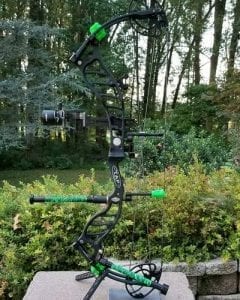 Oh, yeah. Well, that’s perfectly normal then, yeah.
Oh, yeah. Well, that’s perfectly normal then, yeah.
That’s a perfect thing. But there’s so energy in that 20 inches, I mean because mine goes 380 feet per second. It’s just like, “Oh my goodness.”
That’s a tremendous amount of energy, yes.
And dampening that is a challenge.
Right. Oh, it really is. And in the crossbow world that’s an area, you know, we’re actually looking…I’m actually looking at a prototype right now that would further dampen the noise on crossbows. So yeah. So there’s a lot of energy there and unfortunately you can’t put all that energy into the arrow and you can’t get all that kinetic energy dumped into that arrow. So where is the rest of it going? It’s being emitted, you’re feeling it.
It’s going to rail me limbs, that’s where it’s going.
Yeah, exactly. Yeah. And if we can further suppress that, well, then ultimately you get a quieter bow. So, you know, and that’s a goal, people want speed. You know, they want speed, they want, you know, penetration, they want everything, they want quiet. But you can’t really have everything, you know, you’re going to have to have a trade-off somewhere. If you want tremendous speed, you have to have a lot of stored energy. And a lot of stored energy means there’s going to be excess that’s not going to go into the arrow.
You know, you were bringing up an interesting thing earlier about the best components allow you to practice perfect, or have perfect practice.
Yeah.
And so we know that the average whitetail shot is 20 yards and under. You know, out west, yeah, you can have hundred-yard shots and, yes, on some alfalfa fields or bean fields you can have long shots.
Oh sure. Yeah, yeah.
But the average is 20 yards. Yet we’re setting up our bows to be capable of shooting 100 yards. With the speeds today and everything and all the components, you know, guys shoot 80 to 100 yards, you know, in practice. But you brought up an important thing, being able to stack your arrows and group your arrows at your chosen distance.
Right.
Then you come down to a 20-yarder, then everything goes away and you just focus on the shot, picking the spot.
Right, yeah.
And so let’s talk about that.
Sure.
the importance of having the components that make you on target to build your confidence.
Go ahead and talk about, you know, the importance of having the components that make you on target to build your confidence.
the best item that you can for whatever given application, I believe, is really critical. So, you know, people put a lot of time and focus on sights. Guys will drop a lot of money on a sight, and then maybe scrimp on a stabilizer. I see that a lot. Or they’ll drop a lot of money on the bow itself, of course, but then outfit it with subpar accessories. You definitely do not want to do that. Personally I’d rather buy a used high-quality bow and put additional money into better accessories. I think you’re going to be better off that way than outfitting it with poor accessories.
So being able to have that level of confidence and having developed the muscle memory from the repetitive practice that you do with these products is important. Seeing the success that you can achieve with a good product like ours just builds your level of confidence. I mean it makes it to the point where if you do develop that, you’re not thinking, “Is there a chance I’m going to miss at that 20-yard”… It’s not even going to creep into your mind. You are so confident that you will execute the shot correctly. And I just think that it comes with practice, that comes with having the right equipment, that comes with seeing the results.
So it all ties in together though. I mean you can’t extract one part and have this work. So that’s why I’d recommend using the best stabilizer you can. Whether that’s ours, hey, that’s your choice. I don’t tell people they need these products. If you want the best performance, I believe that’s where you’ll find it. But use what works for you. And if you choose another brand, choose the best one you can afford, whatever brand that is.
Yeah, and I like that because it’s just…you know, confidence is key, there’s no question about it. And by having the best components on your bow, then that starts with your field tips and fletchings. I mean there are so many different parts and you have to go with the best. And I tell people all the time, they said, “What’s the most important gear for hunting out west?,” I said, “Your optics.” Well, first your boots. First your boots, and then your optics.
Yeah, good point.
First your boots. Because if your feet go, you’re screwed.
Yeah, if your boots are bad, you’re screwed.
I don’t care, it doesn’t matter.
Yeah.
So you got to have good boots and you got to have good optics because you don’t want to walk a mile just to get in closer on that bull, on that buck, or on an antelope, you know, just to make sure that’s the one you want.
Right.
You don’t want to do that. Plus you don’t want to walk 10 miles when you could sit on a mountainside and let all the game come to you. And you can see, hey, there’s no game in that basin, after spending all day.
Right.
there are some things that people neglect at times
And I know guys that hunt on a five-day hunt. They’ll hunt three or four days they’ll long-distance scout. Until…as soon as they see what they want, they’re gone. I mean because they know the habits and stuff. But until they see that, then they’re going to keep switching basins and places, you know, to find the deer. And that’s a little hard to do with whitetails. It’s possible, but it’s harder.
Yeah, it’s different. I mean it’s different. You know, it’s a different set of circumstances for the most part. The average bow hunter is only pursuing whitetails anyway. Yeah, I agree. I mean different considerations, different priorities. But even so, you know, you can place a list…you can make a list of which items really should be your top items when you’re looking at getting the best performance from your bow. And, you know, there are some things that people neglect at times. I mean you even see guys that have really frayed bow strings, they’re not maintaining the bow strings. You know, there’s different things that people, I think, sometimes neglect and that we’re trying to stress to people and we try to educate people about, is this is an area that you should not overlook. And you shouldn’t just slap on whatever you get from the store and assume it’s ready to go as is.
You know, a product like this has three ounces of removable…individually removable weights. Well, that’s because some people like that much weight on the front, some people like even more. But I don’t sell this with the idea that this is ready for your bow. You need to put this on, see what gives you…what kind of freehold stability you’re getting, but also see what you’re getting on targets and put it through its paces. And if you’re using a side stabilizer, like I mentioned earlier, it gets even more complicated. Because now you have to factor in those angles if that bar is running and how much weight is on that bar. And people ask me all the time, “Well, what’s the right ratio of weights for my bow? This is the bow I have.” I said, “You know what? I can’t give you a formula for that. I can give you a general idea, but I can’t tell you specifically how much weight you need to put on your bow. That depends on a lot of factors.”
Yeah, that’s a whole seminar, that’s a whole talk.
Yeah.
So you look at a bow, you go and get a top-of-the-line bow, without mentioning any manufacturers. So you get the bow, what’s the next most important accessory that you should have?
Well, I’m not going to biased here and just say it should be stabilizers, I don’t really think that’s… I think your release is a really…probably, in my view, the next big thing, the release you choose. Because ultimately that’s the deciding factor to me, is that you’re really comfortable and good with the particular release that you use.
And then…you know, and then it can shake out in a number of ways beyond that, sights, rests, you know, a whole variety of things. But I’ll even go as far to say that the bow is…the brand is not important. Like you said, the manufacturer doesn’t matter. If you pick a reputable manufacturer, one of their top-end bows, you will be able to make that function very well for you, in my view. People are way too preferential on certain brands and it’s like, “That’s the only one I can use.” No, I reject that argument. I completely reject that. You can use variety of options out there, but you still need to personalize it to where it’s working for you.
So I’d say the release is right up there. And then, you know, selecting good arrows, too. You know, you can’t go into, you know, a chain store, necessarily, and pick up six arrows and just… Buy good arrows. I don’t know if you care if I mention brands that we use or not, but…
No, that’s okay, go ahead.
Okay. But, you know, we have a co-op with Black Eagle. And I’ve had phenomenal success with Black Eagle arrows https://www.blackeaglearrows.com/, I think they’re really, really well-made arrows, but there’s a lot of other good arrows. But just buy a higher end item if you can, you know, find a way to do that. I’ll have guys tell me, they’ll say, “Well, you know, in years previous I bought a cheap stabilizer because I couldn’t quite afford a better one.” And I say, “Well, then just wait a week or two until you have a couple more bucks and buy what really will work the best for you. Don’t rush out and grab something.” And that happens all the time.
And I think, folks, you know, what Sam is talking about, you know, get the best equipment you can get, but figure out the most important things and do some research. You got plenty of YouTube and Google. I mean we have more information today than, you know, any pro shop can give you, and there’s great pro shops. But, you know, they only can sell you what they have. And if they don’t have X and you found out from people maybe X brand is what you need because of you, then you got to go find it.
Go find it. Go find it. And that’s the beauty of what we’re doing, is that I don’t…I mean we don’t deal really very much at all with retailers, this is an almost all direct-to-consumer model. And we’ve proven that it can be pretty successful doing that. And that’s the beauty of things the way they are now. At your fingertips you can quickly research what the opinions are on a product and get unbiased, for the most part, pretty good data on different products out there.
And so you don’t want to settle for what, you know, the local shop has, he may only have a couple options. And when it comes to accessories, shops don’t focus much on accessories. On having a variety of accessories, anyway. Products like ours, those guys, the shops typically feel like they’re pretty set with what they have. And it’s tough to break into that arena with what we do. So that’s why I’ve driven us ahead on social media and online and that’s what’s worked.
Well, Buddy Piland and Ozonics, you know, they’re direct. And Ozonics, everybody knows Ozonics https://www.ozonicshunting.com/. And he made the decision. You know, and Prois Apparel, Kirstie Pike with Prois Apparel https://www.proishunting.com/, they’re direct. They did the big box thing and everything like that, then they realized that…
It’s hard to do. Hard to do.
And, you know, now, you know, they got a very…they’re very successful, both companies are very successful. So, you know, if you’re listening to this and you got a better mousetrap idea in the hunting industry, you don’t need to be in the big box stores, you really don’t.
No, you don’t.
If your gear is good and you can market it and use the power of social media.
If you can market it, you can get a loyal following of people that are willing to talk about your product. That’s a big thing I need to make mention of that, we have a brand ambassador team, about 150 people we have. We don’t call them pro staff, I kind of look…I don’t like that term. I don’t really even like the field staff/pro staff thing. They’re brand ambassadors. They’ve gotten our products, they bought them themselves with their own money, but they love the products and they talk about them all the time. You couldn’t ask for better marketing than what these people do. I think if I were paying people, they may not do as good of a job as a lot of these people do.
And that’s something you can develop if you have a product you’re looking to get out there, is get a loyal following of people that are willing to support what you do. And I think that’s a big thing of we’re about, too, is those people, they can talk to me, they can directly access me, and they value that I care so much about this, that I have all this passion about it. So, yes, this is a good product, but they also have something else that they’re attached to that means something to them, and that’s really important.
And we covered a lot of information and I have a feeling, if you’re willing, that we’re going to come back and revisit this because I like how you think and I like what you’ve shared. One, about the passion, about being an innovator in the industry, but also how to bring product to market. And, you know, we live in a changing time in the outdoor industry. And, you know, do you go to ATA? Do you go to ATA?
We exhibited twice at ATA. I made the decision that we would not go this year, however. That’s a whole…we could have a whole podcast on that, if we wanted to.
Yeah. Which is good. And I had Matt Kormann on the show just a couple weeks ago, he’s the President. And ATA https://www.archerytrade.org/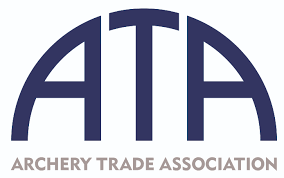 , I go as press because I want to find out what…you know, what people are looking at and what the trends are. And it’s important for Whitetail Rendezvous for me to meet up with people and say, “Gee, that’s interesting.”
, I go as press because I want to find out what…you know, what people are looking at and what the trends are. And it’s important for Whitetail Rendezvous for me to meet up with people and say, “Gee, that’s interesting.”
Oh yeah, there’s opportunity, there are phenomenal opportunities.
Yeah, it’s a great thing. So saying that, Sam, this isn’t the last time we talk. Thank you for your time.
Thank you.
Bruce: And on behalf of hundreds of thousands of listeners of Whitetail Rendezvous, this had been really fun and we got to talk. Once you get that stabilizer, I shoot an Excalibur http://www.excaliburcrossbow.com/.
Yeah. Oh yeah. I’ll get you hooked up, I’ll get you hooked up.
Yeah. And, yeah, I’d be more than happy to buy it, because it does make a lot of noise. I mean it’s deadly, there’s no question about it.
They’re deadly, they’re deadly, but that’s their downfall. And that’s something that if I can make a breakthrough, which I think I can, we got some real potential there.
Yeah, you do, because it’s a fast growing marketing segment. So on behalf of my listeners, again, Sam Shaffer with Titanium Archery Products, thank you for being a fantastic, awesome guest.
Thanks so much for having me on.
https://www.facebook.com/TitaniumArcheryProducts/
https://www.instagram.com/titanium_archery_products/
Enjoy the podcast more with a cup of hot coffee from our sponsor Buck Wild Coffee…
Buy your favorite roast at https://whitetailrendezvous.com/shop